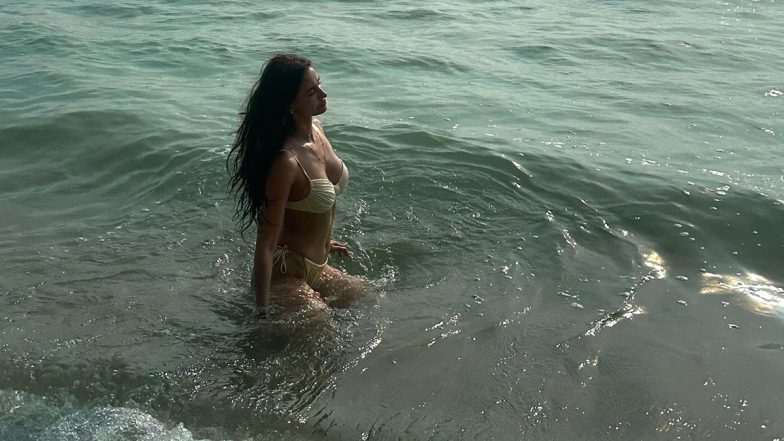Armies rarely measure their success by the roads they’ve paved or the rail lines they’ve laid down — but that may be the metric Russia is using in occupied portions of Ukraine, where major infrastructure projects are underway or are being planned.
Over the last few months, Moscow-based media have reported on the construction of a new railway line between Rostov-on-Don in Russia, near the Sea of Azov and the border with Ukraine, and Yakymivka, about 10 kilometres north of the Crimean peninsula.
Experts in both Europe and North America describe it, and other potential public works projects, as part of a far-reaching attempt by the Kremlin to bind the territory it has captured more closely to Russia — something to which western nations backing Ukraine need to pay close attention.
Although details are scarce, the new rail line would mainly go through occupied Ukrainian territory — the southern regions of Donetsk and Zaporizhzhia — and past the key cities of Mariupol and Melitopol.
The Russian and Ukrainian armies may be locked in a death struggle with little movement of the frontlines, but the bricks and mortar work behind those lines (and the economic consolidation that comes with it) is becoming increasingly important, said one expert.
“I think Putin can still win the war, in the post-fighting period,” said Matthew Schmidt, an expert on Eastern Europe at the University of New Haven Connecticut.
“If Ukraine doesn’t become a modernized, economically stable and prosperous country, then eventually Putin can exert the kind of political control over Ukraine that he was trying to do by military means and failed to do.”
Schmidt said the consolidation underscores how “countries like Canada and the United States have to absolutely come through [on] supporting Ukraine economically with donor funds, and with support for large-scale foreign direct investment.”
Ukraine’s Ambassador to Canada Yuliya Kovaliv has for months been making the same argument to political and business audiences — most recently when she defended the modernization of the Canada-Ukraine Free Trade Agreement.
“This stability and security will serve as a catalyst for increased investment and economic co-operation, which will create jobs in both countries,” Kovaliv told the House of Commons standing committee on international trade.
She noted that Ukraine is starting with an infrastructure deficit, due to the widespread destruction caused by Russian bombs and missiles.
“Infrastructure is one of the sectors that suffered the most in terms of damages, including the critical infrastructure,” she testified.
“Only last winter, 50 per cent of all of the electricity grids, part of the critical infrastructure in Ukraine, has been damaged. This paves the way for the structural rebuilding of the sectors, and we would welcome Canadian companies to cooperate with Ukrainians in the rebuilding of the infrastructure sector.”

The $107 billion the United States has sent to Ukraine makes it by far the country’s largest donor of economic and military aid, according to tracking carried out by the Kiel Institute for the World Economy.
On Friday, the United Kingdom announced a package of mostly military aid worth $4.2 billion Cdn. The government of Prime Minister Rishi Sunak is, however, among the top contributors to Ukraine, with overall assistance pledges amounting to $15.8 billion Cdn.
Canada, meanwhile, has contributed $4.85 billion in loan assistance to Ukraine in addition to $2.4 billion in military aid.
Allies’ aid pledges have started to dwindle
But analysts at the Kiel Institute have noted that allied pledges have seen a steep decline as the war has dragged on.
“Newly committed aid has reached a new low between August to October 2023 — an almost 90 per cent drop compared to the same period in 2022,” said a report by the German-based institute dated Dec. 7, 2023.
The Washington-based Institute for the Study of War (IFSW) has also noted Russia’s increased investment in the occupied regions.
“Russian regional and occupation authorities continue infrastructure programs designed to integrate occupied Ukraine into Russia,” the IFSW said in a situation report.
Oleksandr Musiienko, the head of the Center for Military and Legal Studies in Kyiv, said there’s a clear-cut military imperative for Russia to construct a rail line through occupied regions of Ukraine.
“They’re thinking about alternative routes to the Kerch Bridge,” Musiienko told CBC News, referring to the parallel bridges — one a four-lane road and the other a double-track railway — that connect occupied Crimea with Russia.

Much of Moscow’s war materiel is funnelled over the bridge, which has been a frequent target for Ukrainian forces.
“They’re scared what could happen if Ukrainians have success” in destroying the structure, Musiienko said.
Musiienko said it’s also clear the Kremlin wants to demonstrate to the people in the occupied regions how they would “rebuild and restore” the territories.
The flip side, he said, is that whatever Russia tries to build, Ukraine will try to knock down with long-range missile and drone strikes.
Speaking before the House of Commons defence committee in December, Rand Corporation expert Howard Shatz said the West is a unique position to give Ukraine a leg-up in terms of investment.
Historically, the kind of aid the United States, the U.K. and Canada have been providing only moves the investment needle so far.
“Private investment that Ukraine mobilizes from new and existing foreign investors, residents and even — or especially — the Ukrainian diaspora will be essential to successful reconstruction,” Shatz said, noting that investment needs to be coupled with western security guarantees.
“The only thing I’ll say about security now is that durable security arrangements, supported by the West, will help Ukraine deter and defend against future Russian attacks. However, they’ll do more than that. Historically, we have seen that such arrangements give investors the confidence to take risks and make long-term commitments.”







